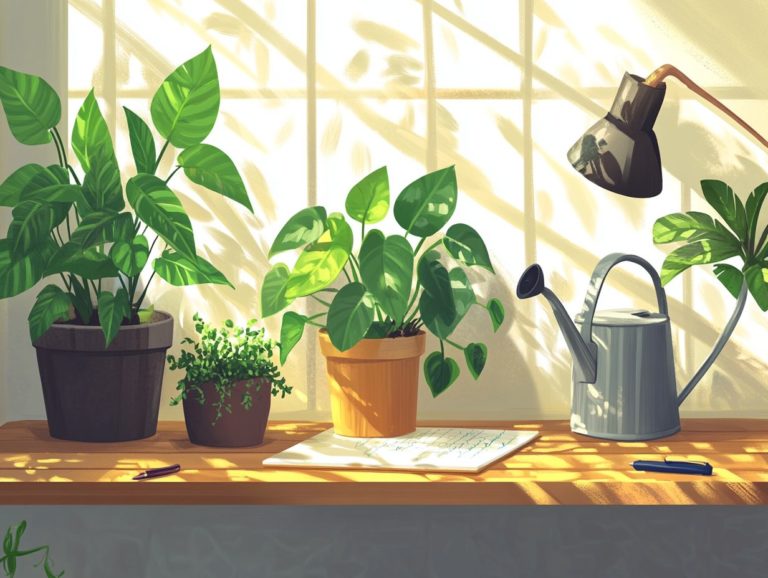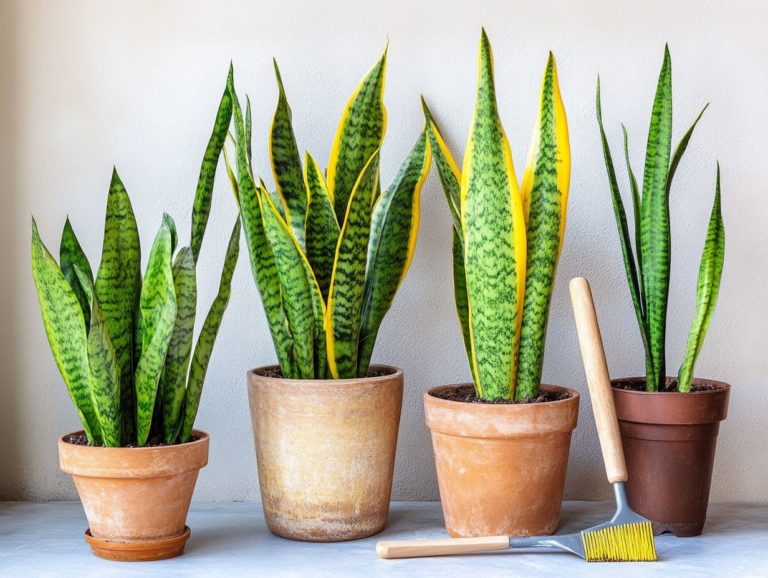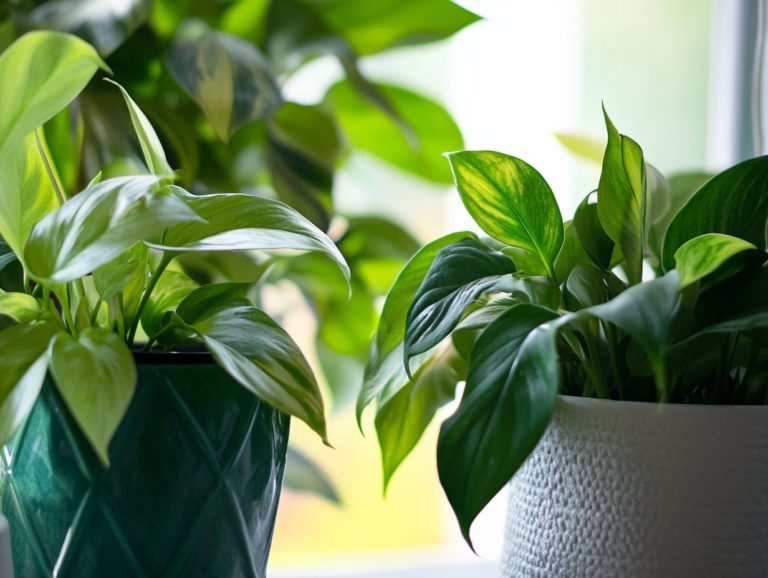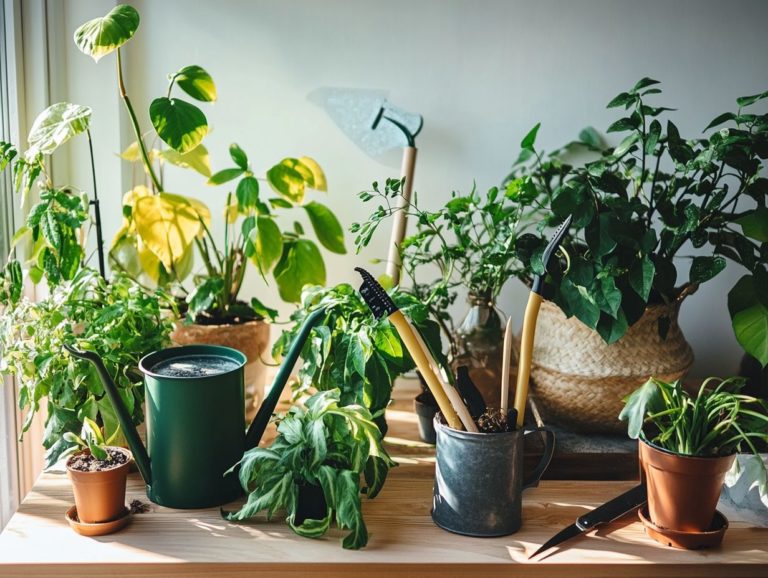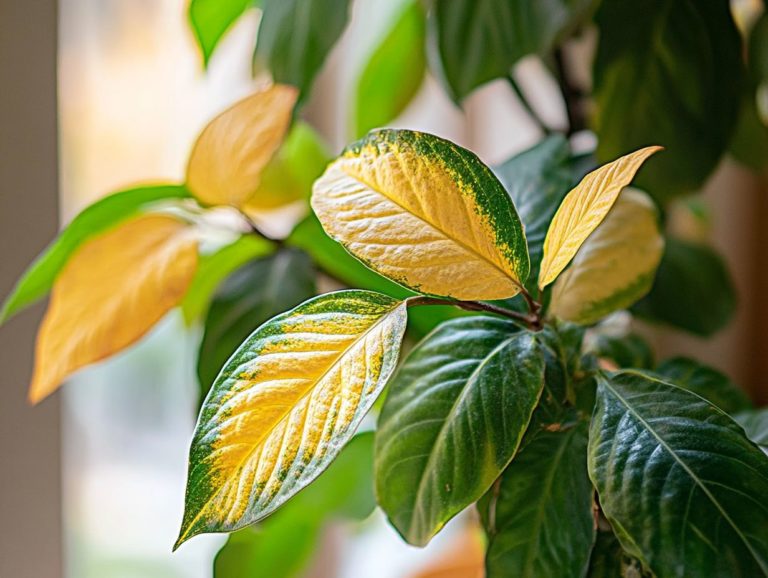Quick Guide to Common Indoor Plant Issues
Indoor plants have the remarkable ability to infuse life and vibrancy into any space, yet they present their own set of challenges. From yellowing leaves to pesky pests, recognizing the signs and symptoms of common plant problems is essential for any plant enthusiast.
Let s explore the exciting world of indoor plant care! Discover the common problems that can affect your green friends and learn how to address them effectively.
Whether you re a seasoned gardener or just beginning your journey, you ll find valuable insights to ensure your greenery remains healthy and flourishing.
Contents
- Key Takeaways:
- Why Do Indoor Plants Face Problems?
- Identifying Common Plant Issues
- Causes of Plant Issues
- Troubleshooting and Solutions
- Preventing Plant Issues
- Frequently Asked Questions
- 1. What problems do indoor plants often have?
- 2. How can I identify a pest infestation on my indoor plants?
- 3. What causes nutrient deficiencies in indoor plants?
- 4. How can I prevent common indoor plant issues?
- 5. What should I do if my indoor plant has yellow or wilted leaves?
- 6. Can I use natural remedies to treat common indoor plant issues?
Key Takeaways:
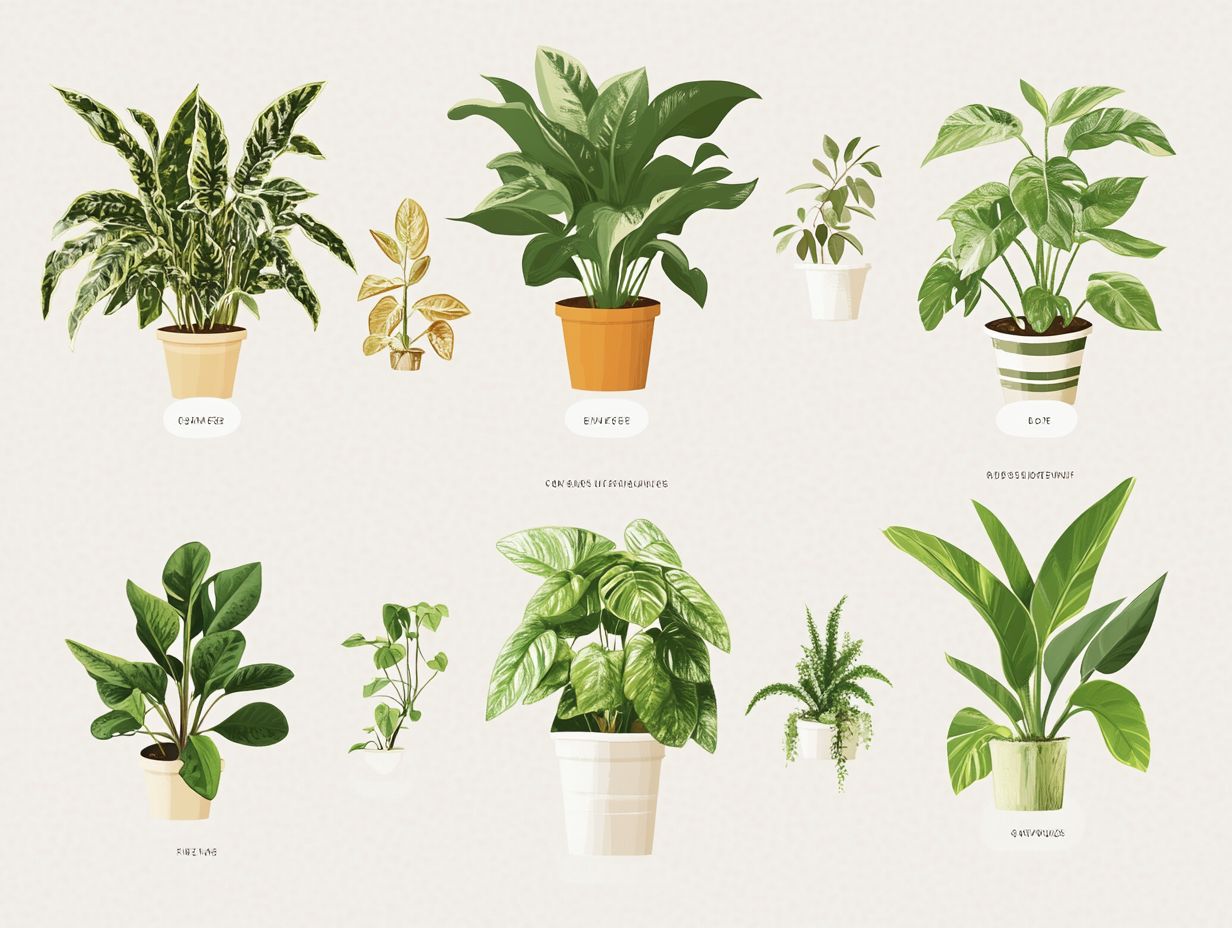
- Identify signs and symptoms to solve indoor plant issues.
- Understand that environmental factors (like humidity and light) and pests are common causes of plant problems.
- Don t wait! Regular care is key to preventing your plants from suffering.
Why Do Indoor Plants Face Problems?
Indoor plants undoubtedly infuse your home with vibrancy and life. However, they can encounter various challenges that impede their growth and aesthetic charm.
For example, yellowing leaves might signal overwatering, while dropped leaves could suggest stress from low humidity (inadequate moisture in the air) or insufficient light. Additionally, discolored leaf tips can indicate a nutrient deficiency or root rot (when plant roots decay due to excess moisture).
Factors such as humidity levels, suitable soil types (the kind of dirt used), and light exposure significantly impact a plant’s overall health. Neglecting any of these can lead to weak growth or unsightly distortions in growth patterns.
Pests are also common in indoor gardening. Accurate diagnosis is essential for effectively addressing these problems.
Identifying Common Plant Issues
Identifying common plant issues is essential for maintaining healthy houseplants. Various signs often indicate underlying problems that demand your attention.
For instance, yellowing leaves might signal overwatering, while dropped leaves could suggest stress from environmental factors. Discolored leaf tips can be a telltale sign of nutrient deficiencies or root problems.
Regularly diagnosing your plants is crucial; it allows you to catch issues early and keep your greenery thriving.
Signs and Symptoms
Houseplants send out a variety of signals that alert you to potential issues. It s important to be both observant and responsive.
- Yellowing leaves: Often indicate nutrient deficiencies or overwatering.
- Dropped leaves: May suggest stress from environmental factors like low humidity or insufficient light.
- Discolored leaf tips: Can point to problems such as root rot or pest infestations.
- Distorted or weak growth: Usually stems from neglecting proper care practices.
- Wilting foliage: Frequently indicates either underwatering or improper watering techniques, leading to dehydration.
- Brown patches: Might suggest excessive sunlight exposure.
- Tiny flying bugs or webs: Clear signs of a pest problem that requires immediate attention.
By understanding these diverse symptoms, you can take proactive measures to ensure your houseplants not only survive but truly thrive, creating a healthier indoor environment. Additionally, be aware of the top 5 indoor plant diseases to watch for to maintain their well-being.
Causes of Plant Issues
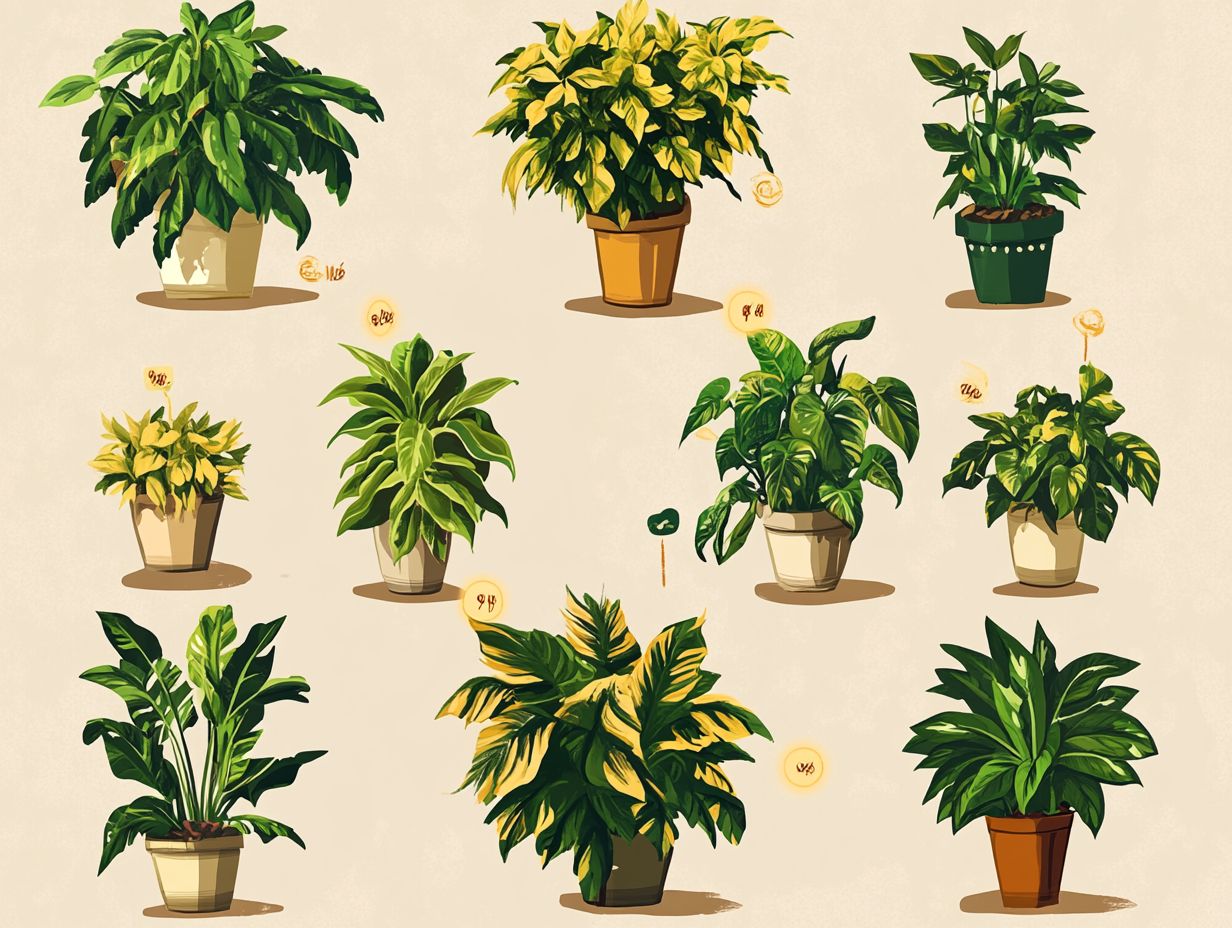
Understanding the root causes of houseplant problems is essential for effective troubleshooting and prevention. A range of factors can adversely affect your houseplants’ health, including fungal diseases and root rot. Environmental elements, such as insufficient light exposure and low humidity levels, significantly contribute to plant problems, often manifesting as weak or distorted growth patterns.
Pest infestations can also complicate your plant care routine. Tiny pests like thrips and spider mites can wreak havoc on your plants. Overwatering can create conditions ripe for root rot and various fungal diseases, making it vital to stay vigilant and informed.
Environmental Factors
Environmental factors are crucial to the health and well-being of your houseplants. When conditions are less than ideal, you may encounter many problems that can be tricky to diagnose. For example, if the humidity levels are lacking, you might notice discolored leaf tips and stunted growth. These conditions further stress your plants and make them susceptible to common pests.
On the flip side, low light exposure can lead to distorted growth and increase vulnerability to diseases. Grasping these factors is essential in your plant care journey. Providing the right environment can vastly improve the vitality of your green companions.
The relationship between humidity, light, and soil conditions is complex. High humidity can invite fungal infections, while overly dry air might stress your plants and attract common pests like aphids or spider mites. Light quality and duration are equally important; some species flourish in bright, indirect sunlight, while others prefer the comfort of shade. The type of soil you choose influences moisture retention and nutrient availability, both vital for robust growth and resilience.
By carefully evaluating and fine-tuning these environmental factors, you can create a thriving indoor garden with healthier and happier houseplants.
Pest Infestations
Pest infestations are a common yet often overlooked culprit behind houseplant troubles. Tiny flying bugs like aphids, thrips, and spider mites can drain the vitality from your greenery. These pesky intruders can also set the stage for secondary issues like fungal diseases if you don t take action.
To manage infestations effectively, consider using preventive measures such as insecticidal soap or neem oil. Recognizing the signs of a pest problem is crucial for anyone who cherishes their indoor oasis. Look for yellowing leaves, premature leaf drop, or webbing beneath the foliage; it might be time to investigate further. Sticky residue, often referred to as honeydew, can be a telltale sign of aphid or scale infestations.
Make it a habit to inspect your plants regularly, particularly the undersides of the leaves, to catch these nuisances before they escalate. Keeping your plants healthy with proper watering, sufficient light, and well-draining soil creates an environment where pests struggle to thrive.
By combining vigilance with preventive treatments, you not only protect your plant health but also enhance the beauty of your indoor garden.
Troubleshooting and Solutions
Troubleshooting common houseplant dilemmas demands a systematic approach to accurately diagnose issues and implement effective solutions. For instance, overwatering can quickly lead to root rot. Adjust your watering habits and ensure proper drainage to remedy the situation.
Cleaning your houseplants serves a dual purpose: it helps ward off pest infestations and elevates their aesthetic charm. Regular maintenance practices are essential to incorporate into your plant care routine, ensuring your greenery thrives beautifully.
How to Address Common Problems
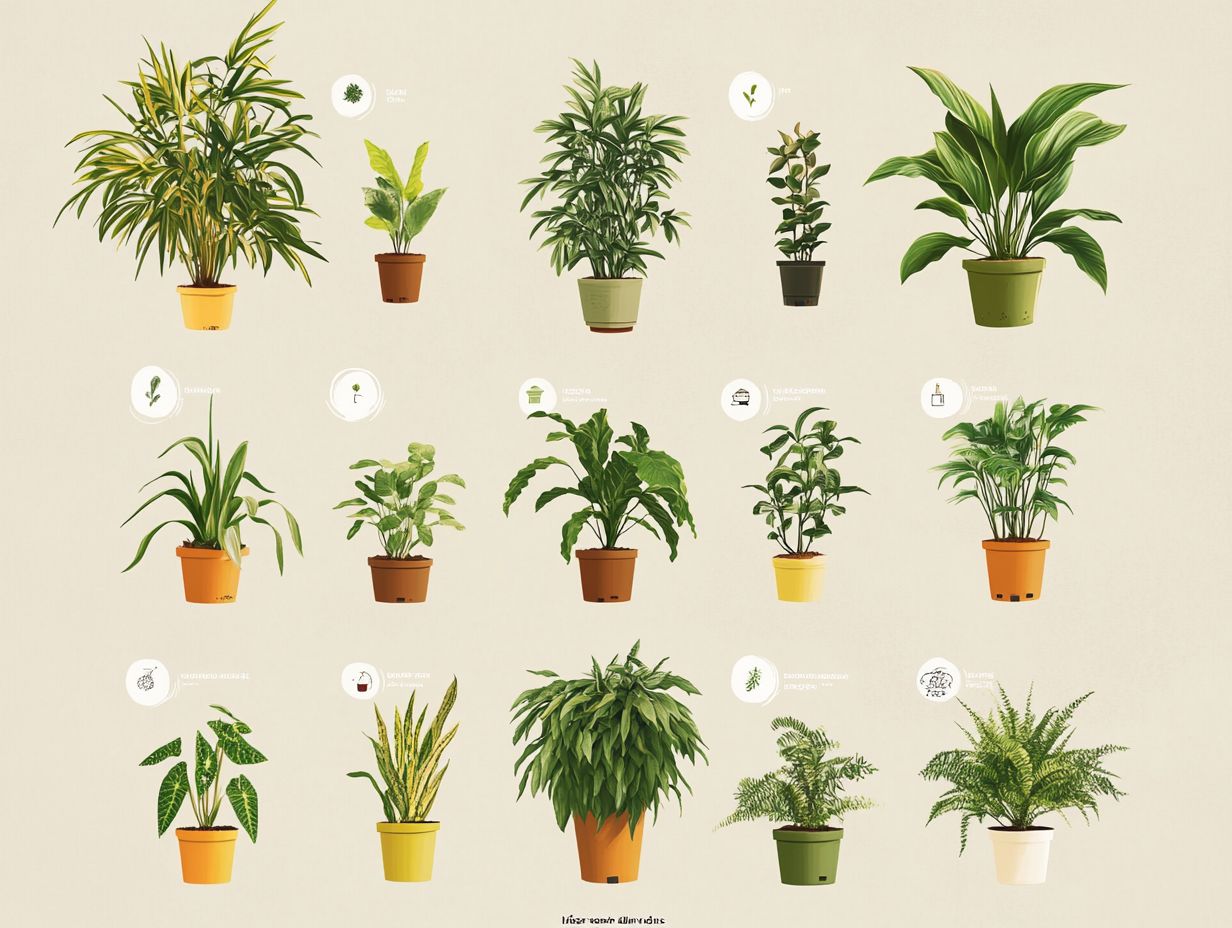
To tackle common houseplant problems, you need to understand the issues clearly. If you’re dealing with overwatering, let the soil dry out and improve drainage.
Pest infestations can often be managed with soap for pest control or neem oil. Recognizing early signs of fungal diseases allows you to take prompt action, ensuring your plants remain healthy and vibrant.
For anyone nurturing indoor greenery, grasping these challenges is vital for creating and maintaining a flourishing environment. Overwatering can lead to root rot, which you can avoid by using pots with drainage holes and monitoring moisture levels.
When confronting pests like aphids or spider mites, regularly check the leaves and stems for sticky residue or webbing.
Implementing preventative measures, such as increasing air circulation, can deter fungal growth. Ensuring your plants receive adequate light exposure will help strengthen them against such afflictions.
By proactively addressing these issues, imagine enjoying a lush, vibrant indoor garden that you ve nurtured!
Preventing Plant Issues
Preventing issues with your indoor plants is far more effective than dealing with them after they occur. It s crucial to adopt best practices for maintaining their health.
Key strategies include monitoring humidity levels and ensuring they receive adequate light exposure. These environmental factors play a significant role in your plants’ vitality, directly influencing their growth and resilience against common pests.
Regularly clean your houseplants to eliminate dust and pests, further protecting both their health and visual appeal.
Tips for Maintaining Healthy Indoor Plants
To maintain healthy indoor plants, implement a series of effective tips tailored to their specific needs and potential challenges. Regularly adjusting humidity levels can significantly enhance growth.
Diligent care practices like proper watering, adequate light exposure, and effective pest management will help prevent common pests from disrupting your indoor sanctuary.
Engage in thorough plant diagnostics to intervene promptly, ensuring your indoor oasis remains vibrant and lush.
Consider investing in a hygrometer to monitor humidity, as many indoor plants flourish in a range between 40-60%. Establish a consistent watering schedule tailored to each plant species; both underwatering and overwatering can lead to undesirable effects.
Keep a close eye on the leaves and stems to catch any early signs of pests, enabling you to treat issues effectively before infestations take hold.
By providing these essential elements, you can cultivate a thriving indoor garden that flourishes throughout the year.
Frequently Asked Questions
1. What problems do indoor plants often have?

Some common issues that indoor plants face include pests, diseases, nutrient deficiencies, over or under watering, and insufficient light.
2. How can I identify a pest infestation on my indoor plants?
You can identify a pest infestation by looking for signs like chewed leaves, sticky residue, webbing, and discoloration on the leaves or stem of your plant.
3. What causes nutrient deficiencies in indoor plants?
Nutrient deficiencies in indoor plants can be caused by using poor quality soil, over-fertilizing, and lack of proper care such as not providing enough water or sunlight.
4. How can I prevent common indoor plant issues?
To prevent common indoor plant issues, regularly inspect your plants for signs of pests or diseases. Use high-quality soil and fertilizers, and provide appropriate amounts of water and sunlight for your specific type of plant.
5. What should I do if my indoor plant has yellow or wilted leaves?
If your indoor plant has yellow or wilted leaves, it may signal too much or too little water. Check the soil moisture and adjust your watering schedule as needed.
Also, check that your plant is getting the right amount of sunlight.
6. Can I use natural remedies to treat common indoor plant issues?
Absolutely! Natural remedies can work wonders for your indoor plants.
Neem oil can control pests, while a mix of water and vinegar can deter insects. If the problem continues, ask an expert for help.

